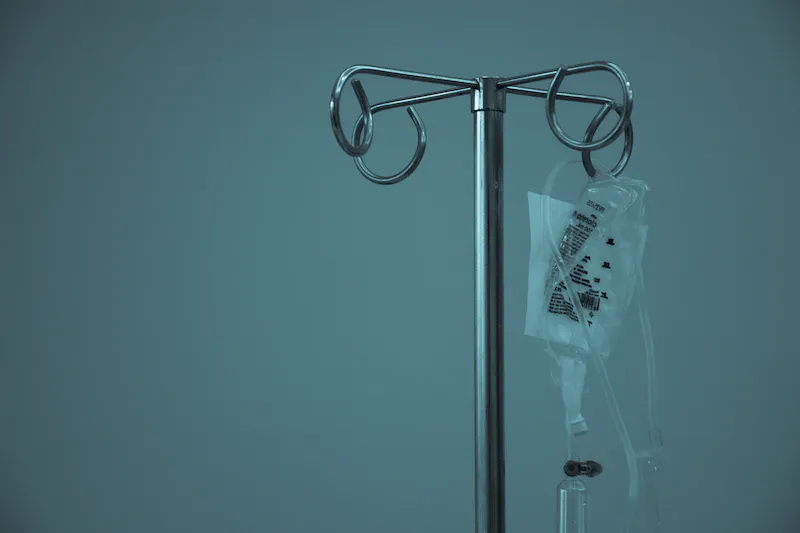The Naked Truth About Pornography: Exploring its Effects on Society and Sexual Health

Pornography: The Number One Teacher on Sex Education?
It’s no secret that pornography has become increasingly prevalent in our society. From the easily accessible content on the internet to the mainstream media, it’s hard to escape its influence. However, what many people fail to recognize is just how much it has infiltrated our understanding of sex education. Pornography is often the first source of information that young people turn to when trying to learn about sex. But what kind of message is it sending?
According to the video script, research has shown that aggressive, abusive, and coercive acts are prevalent in almost every single popular and best-selling porn movie. Dr. Natalie Purcell, a PhD in sociology, found that the porn industry has become increasingly more aggressive and humiliating since the 70s. Acts like ATM, gagging, double penetration, and even choking were included in almost every single movie by the end of the analyzed time period (which was the 2000s). This normalization of aggression and violence in porn is shaping our attitudes and beliefs about sex and relationships.
Furthermore, porn consumption has been linked to trivializing sexual aggression, and research shows a strong connection between porn consumption and acting out sexually aggressive acts, such as sexual assault. Even non-aggressive porn can have this effect on our attitudes because whenever a person in porn is being dehumanized, the change in attitudes is happening. In other words, our attitudes towards sex and relationships are being shaped by an industry that is often violent and aggressive towards women.
The normalization of aggression in pornography is causing a lot of harm, particularly to young people who are still learning about sex and relationships. The video script shares stories of young girls comparing themselves to the unrealistic and often extreme standards set by porn and thinking that they are not good enough or sexy enough. Teenagers are compulsively consuming pornography, and some are even trying to quit unsuccessfully. Many guys are eager to please and perform like they do in porn, and when they aren’t getting the typical porn response from their partner in bed, they blame themselves for not being able to perform sexually.
Overall, we need to start having critical discussions about pornography and its impact on our attitudes and beliefs about sex and relationships. We need to start teaching young people critical thinking skills and equipping them with a mindset that won’t make them easy targets for the harmful messages that are being perpetuated by the porn industry.
The Alarming Effects of Aggression in Mainstream Pornography
Research has shown that mainstream pornography contains an alarming amount of physical and verbal aggression towards women. In one study, researchers analyzed 50 of the best-selling US porn movies and found that nine out of ten scenes contained physical aggression, such as gagging, slapping, and hair-pulling. Additionally, five out of ten scenes contained verbal aggression, with common names like “bitch” and “slut” being used.
What is even more concerning is the typical response to this aggression in porn. Unlike real life where aggression would draw out a negative response, in porn, the response is often neutral or even positive. This normalization of aggression and dehumanization can have a significant impact on attitudes towards sex and relationships.
It is important to note that not all individuals who consume pornography will go on to commit sexual assault. However, research has shown a link between porn consumption and sexually aggressive acts. For some sex offenders, porn has been a triggering factor, leading them to be less sensitive to sexual aggression.
Pornography addiction has also become a concern, with research showing that porn can hijack the reward pathway in the brain and become a compulsive behavior with addictive qualities. In fact, a study conducted by a leading researcher in the neurosciences department at the University of Cambridge showed that compulsive porn users have similarities to those addicted to drugs.
As a society, we need to start having critical discussions about the impact of mainstream pornography on our attitudes towards sex and relationships. By teaching critical thinking and creating awareness through education and conversations, we can equip the next generation with a mindset that won’t make them easy targets.
Pornography Addiction: A Matter of Time and Research?
Pornography addiction is a topic of much debate in the scientific community, with some experts arguing that it is a legitimate condition, while others claim that it is simply a manifestation of other underlying mental health issues. However, research has shown that excessive pornography consumption can have negative effects on the brain, and that it can be addictive in certain individuals.
Studies have shown that viewing pornography can trigger the release of dopamine, a neurotransmitter that plays a role in the brain’s reward system. This can lead to the development of tolerance, where individuals need to consume increasingly extreme forms of pornography to achieve the same level of arousal. Additionally, withdrawal symptoms can occur when individuals are unable to access pornography, including feelings of anxiety, depression, and irritability.
In the video, it was discussed that pornography addiction can have a negative impact on an individual’s personal and professional life. For example, excessive pornography consumption can lead to a decline in work productivity, as well as social withdrawal and relationship problems. It was also mentioned that addiction to pornography is not limited to men, and that women can also be affected.
Despite the growing body of research on pornography addiction, there is still much that is not known about this condition. More research is needed to determine the prevalence of pornography addiction, as well as the most effective treatments for those who suffer from it.
In conclusion, the topic of pornography addiction is complex and requires further research. While some experts argue that it is not a legitimate condition, studies have shown that excessive pornography consumption can have negative effects on the brain and lead to addictive behaviors. It is important to continue to study this issue and develop effective treatments for those who suffer from it.
Neuroscientific Findings on Compulsive Porn Users
Recent research has shown that compulsive porn users have unique brain patterns compared to non-compulsive users. According to studies, the reward center in the brain, the nucleus accumbens, is highly activated when viewing pornography. In addition, the prefrontal cortex, which is responsible for decision-making and impulse control, is less active in compulsive porn users. This suggests that these individuals may have difficulty regulating their urges and impulses.
One study found that compulsive porn users had smaller gray matter volume in areas of the brain associated with decision-making, emotional processing, and impulse control. This suggests that compulsive porn use may lead to structural changes in the brain.
Furthermore, the desensitization effect of pornography on the brain has been linked to the need for more extreme forms of pornography to achieve the same level of arousal. This can lead to a downward spiral, as users seek out more extreme content to achieve the same level of pleasure.
It is important to note that not all individuals who use pornography will develop compulsive use. However, these findings suggest that there is a subset of users who may be at risk for developing problematic behaviors.
While these findings are relatively new, they highlight the importance of considering the potential impact of pornography on the brain and the potential for addiction. It is important for individuals to educate themselves on the potential risks associated with compulsive use and to seek help if they feel they may be struggling with addiction.
The Need for a Critical Discussion About Pornography
The proliferation of pornographic content on the internet and the ubiquity of devices that provide easy access to it have sparked a growing concern among researchers and mental health experts about the potential impact of pornography on individuals and society at large. In light of the evidence presented in the previous sections, it is clear that the issue of pornography is a complex one that requires careful and nuanced consideration.
While it is important to acknowledge that many people enjoy and use pornography without experiencing any negative effects, it is equally important to recognize the potential harm that it can cause. This harm can range from perpetuating harmful gender stereotypes and objectification of women to contributing to addiction and compulsive behavior.
As such, there is a need for a critical and open discussion about pornography that takes into account the multiple perspectives and experiences of individuals. This discussion should involve researchers, educators, policymakers, mental health professionals, and individuals who consume pornography.
Furthermore, we need to develop effective strategies for preventing and addressing the negative effects of pornography. This includes promoting healthy and respectful sexual relationships, fostering media literacy, and providing effective treatment for individuals who struggle with compulsive pornography use.
Ultimately, by engaging in a critical and nuanced discussion about pornography, we can help ensure that individuals have access to accurate information and support that enables them to make informed decisions about their sexual health and wellbeing.
Changing Attitudes: A Youth Organization’s Success Story
While the impact of pornography on individuals and society is concerning, there are some promising stories of organizations successfully changing attitudes towards pornography. The speaker in the video highlights the example of a youth organization that aims to raise awareness about the negative effects of pornography and enable young people to make informed choices.
The organization hosts workshops and events that educate young people about the harms of pornography and promote healthy sexual attitudes and behaviors. By creating a safe space for open discussions about sexuality and pornography, the organization is breaking down the taboo surrounding the topic and encouraging young people to think critically about the media they consume.
One of the key successes of the organization is its ability to engage with young people on their level, using social media platforms and popular culture references to get their message across. They also work closely with parents, teachers, and other community leaders to create a supportive network for young people.
By addressing the harmful effects of pornography head-on and providing young people with the tools to make informed choices about their sexuality, this organization is making a positive impact in the lives of many. It serves as a model for other organizations and individuals who wish to take action against the harmful effects of pornography.
Society Based on Equality, Consent, and Sexual Health
The negative effects of pornography are not limited to individuals, but also have societal consequences. Pornography can perpetuate harmful attitudes towards sex and relationships, contributing to a culture of sexual objectification, inequality, and even violence. Therefore, it is crucial to promote a society based on equality, consent, and sexual health.
One way to achieve this is through comprehensive sex education. This includes education on consent, healthy relationships, and communication skills, as well as information on sexual anatomy and pleasure. By providing accurate and non-judgmental information, young people can develop healthy attitudes towards sex and make informed decisions about their sexual lives.
Another important step is to create more inclusive and diverse representations of sexuality in media and entertainment. By depicting a wider range of bodies, desires, and sexual practices, we can challenge the narrow and unrealistic standards set by mainstream pornography. This can also help to promote a more sex-positive culture that celebrates diversity and pleasure.
Finally, it is crucial to address the underlying social and economic factors that contribute to the demand for pornography. This includes tackling issues such as gender inequality, poverty, and lack of access to healthcare and education. By creating a more just and equitable society, we can reduce the harm caused by pornography and promote healthier and more fulfilling sexual experiences for all.
How Will You Start the Conversation About Porn?
Starting a conversation about pornography can be uncomfortable, but it is important to have an open and honest dialogue about it. Here are some tips on how to start the conversation:
- Normalize the discussion: Pornography is a common topic, and it is important to normalize discussing it as a part of healthy sexual education.
- Start with a question: Asking a question can help to open the dialogue, for example, “Have you ever watched pornography? What do you think about it?”
- Share information: If you have learned something new about pornography, share it with others to start a conversation. For example, you could say, “I recently learned that mainstream pornography can be aggressive and harmful. What are your thoughts on this?”
- Listen actively: It is important to listen to what others have to say and avoid interrupting or judging them. This can help to create a safe and open environment for discussion.
Remember, the conversation about pornography is ongoing and should be approached with an open mind and willingness to learn. By having these discussions, we can create a society that is based on equality, consent, and sexual health.
Conclusion
As we wrap up our discussion about the impact of pornography on our society, it is important to recognize that this is a complex issue that requires a multifaceted approach. The speakers in the video provided valuable insights into the harms of pornography, but also highlighted the need for a critical and nuanced conversation around the topic.
One of the key takeaways from the video is the need to address the aggressive and non-consensual content in mainstream pornography. The normalization of this type of content can have harmful effects on our attitudes towards sex and relationships, and it is crucial that we work towards creating a society based on equality, consent, and sexual health.
Another important point raised in the video is the potential for addiction to pornography, and the need for further research on the topic. It is crucial that we continue to explore the impact of pornography on the brain and behavior, in order to better understand the potential harms of its use.
The video also highlighted the importance of starting the conversation about pornography, especially with young people. By providing comprehensive and accurate sex education, we can enable individuals to make informed choices about their sexuality and relationships, and equip them with the tools to navigate the world of pornography.
Finally, the success story of the youth organization in the video shows that change is possible. By creating safe and inclusive spaces for young people to discuss sexuality and relationships, we can challenge harmful attitudes and create a more informed and enabled generation.
In conclusion, while the topic of pornography can be uncomfortable and complex, it is important that we engage in a critical and nuanced conversation about its impact on our society. By addressing the harms of aggressive and non-consensual content, understanding the potential for addiction, and providing comprehensive sex education, we can work towards creating a society based on equality, consent, and sexual health. It is up to all of us to start the conversation and create positive change.




